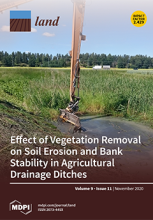/ library resources
Showing items 172 through 180 of 74094.Urban population decline has been extensively described as a triggering factor for community segregation and fragmentation, as well as for land use vacancy and house/flat vacancies, resulting in rising interest in strategies of green infrastructure expansion aimed at citizens’ wellbeing and urban
Forests managed by Indigenous and other local communities generate important benefits for livelihood, and contribute to regional and global biodiversity and carbon sequestration goals. Yet, challenges to community forestry remain.
Green infrastructure (GI), as a concept and as a tool for environmental land-use planning at various scales, has burst onto the academic, political, and policy-making scenes in the last two decades.
Massive and rapid urbanization has led to population loss in rural areas, particularly in emerging and developing countries like China. As a result, houses in rural areas become vacant, and the house prices in cities, at the same time, skyrocket.
Indonesia’s new planned capital in East Kalimantan is being touted as a “smart, green, beautiful and sustainable city” but has stoked fears of massive environmental damage to the island of Borneo, one of the world’s most important biodiversity hotspots and carbon sinks.
Agricultural systems are heterogeneous across temporal and spatial scales. Although much research has investigated farm size and economic output, the synergies and trade-offs across various agricultural and socioeconomic variables are unclear.
The purpose of this research is to better conserve biodiversity by improving land allocation modeling software. Here we introduce a planning support framework designed to be understood by and useful to land managers, stakeholders, and other decision-makers.
Planting criteria of new vineyards should comply with rational and sustainable criteria, taking into account the potential mechanisability of existing viticultural areas. However, an established methodology for this assessment is still lacking.
While agrarian change has been a recurrent theme in Ghana’s endeavor for economic development, questions on how land resources should be managed to ensure prompt attainment of economic growth remain unanswered.
Pagination
Land Library Search
Through our robust search engine, you can search for any item of the over 73,000 highly curated resources in the Land Library.
If you would like to find an overview of what is possible, feel free to peruse the Search Guide.

